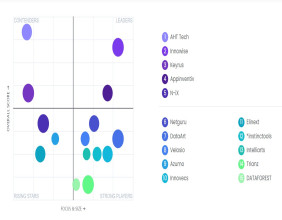Highlights
- Gold and copper prices face downward trends.
- The global economic outlook darkens due to escalating trade disputes.
- Significant movements in commodity indices signal broad market impacts.
As global markets face increasing challenges, both gold and copper have experienced notable declines. This downturn is part of a broader market response to intensifying trade tensions led by US President Donald Trump, which are affecting the outlook for the global economy. The instability has also impacted ASX gold stocks, reflecting heightened investor anxiety about the future of commodity-dependent assets.
On Monday, gold, typically seen as a safe haven during economic uncertainty, and US copper (HG=F), a key industrial metal, both opened at lower prices, continuing their recent downward trajectory. This comes after a severe market-wide downturn last week, which saw significant sell-offs across various asset classes, including commodities.
Gold for immediate delivery, despite having reached record highs in recent weeks, fell by approximately 1.3%. Concurrently, copper futures saw a sharper decline, dropping by as much as 8.5%. These movements are part of a larger trend observed in the Bloomberg Commodity Index, which fell 5.8% last week—its steepest decline since 2022.
The decline in US copper prices previously surged due to concerns that impending tariffs might restrict global supplies. However, the landscape has shifted dramatically. The expansion of punitive tariffs, alongside retaliatory actions from China, has stoked fears about a slowdown in global demand. This was particularly evident during the significant sell-off that occurred last Friday on the London Metal Exchange, marking the most substantial drop since March 2020.
Despite gold's usual role as a stabilizing asset during market turbulence, it has not been immune to these pressures. While still up approximately 15% for the year, gold is often liquidated in extreme market conditions as investors seek liquidity to cover losses in other areas.
Early morning trading in Singapore saw US copper trading down over 5% at $4.1785 per pound. Meanwhile, gold was trading lower by 0.7% at $3,015.85 per troy ounce.
This continuing trend of declining prices for gold and copper is indicative of broader economic uncertainties fueled by ongoing trade disputes. As markets adjust to these dynamics, the impact on global economic prospects remains a central concern for investors and policymakers alike. The evolving situation suggests a cautious approach to commodities sensitive to economic cycles and international policy shifts.



